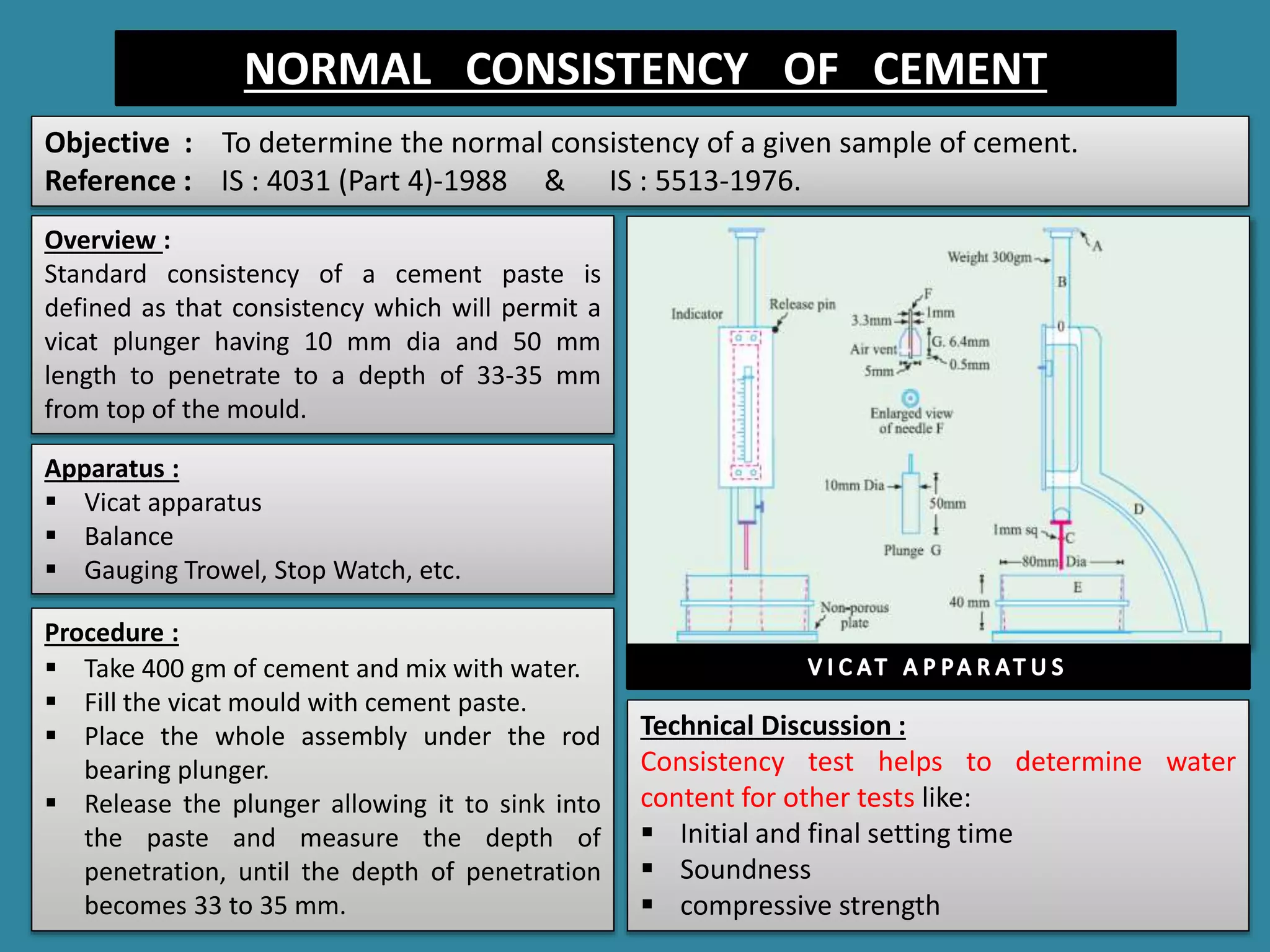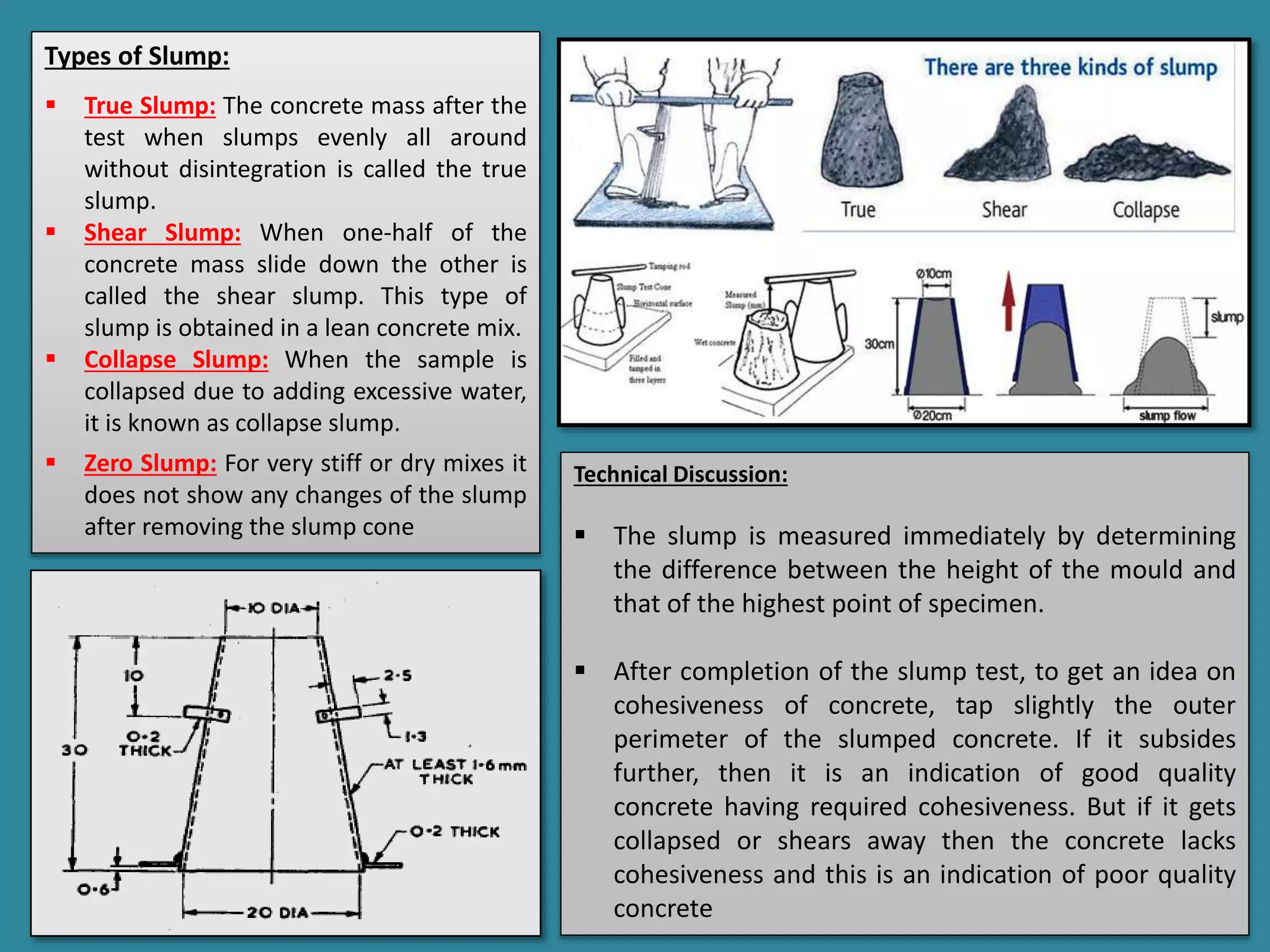The document summarizes several experiments conducted in a concrete technology lab to test properties of cement and concrete, including fineness of cement, normal consistency of cement, setting time of cement, specific gravity of cement, compressive strength of cement, slump test of concrete, Vee-Bee test of concrete, and compaction factor test of concrete. The experiments are performed according to standard procedures and test methods to determine key properties like workability, consistency, setting behavior, density, and strength.





![COMPRESSIVE STRENGTH TEST OF CEMENT
Objective : To determine the compressive strength of a given sample of cement.
Reference : IS : 4031 (Part 6)-1988, IS : 10080-1982, IS : 650-1966 & IS: 269-1976
Overview :
Compressive strength of cement is
determined by compressive strength test
on mortar cubes compacted by means of a
standard vibration machine. Standard sand
(IS:650) is used for the preparation of
cement mortar. The specimen is in the
form of cubes 70.6mm x 70.6mm x
70.6mm
Apparatus :
Cube Mould of 70.6 mm size
Vibration Machine
Gauging Trowel, Stop Watch, Graduated Cylinders, etc.
Technical Discussion:
Compression testing provides data on the integrity and safety of
materials, and ensure that the finished product is fit-for-
purpose and manufactured to the highest quality
Load
Compressive strength = --------------------------------------------------------
Cross sectional area of specimen
The quantity of cement, standard sand and water shall be as follows:
Cement = 200 (g), Standard Sand = 600 (g) and Water = [(P/4)+3] (%
of mass of cement+sand), whether P is the % of water required to
produce a paste of standard consistency.
As the compressive strength of the mortar is less then the required
strength so it cannot be used for permanent constructions.
Cube
Mould
&
Cement Cube](https://image.slidesharecdn.com/concrete-200304043538/75/Concrete-Technology-6-2048.jpg)



